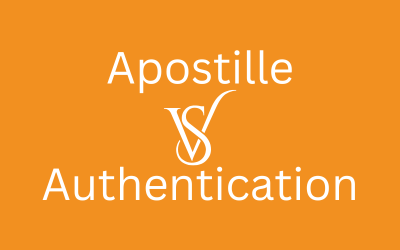From your company logo to your trade secrets, your business’s intellectual property has value. That’s why it’s important to take measures to protect it.
What are the various types of intellectual property and how can business owners’ safeguard them? Here’s a primer on trademarks vs. copyrights vs. patents.
Trademark Basics
A trademark is a word, phrase, name, design, or symbol (or a combination of those elements) that identifies the source of a product or service. Its purpose is to distinguish a business and its products or services from competitors. Trademarks can be a company’s name, product names, logos, and taglines.
A business doesn’t necessarily have to register a trademark with the USPTO (U.S. Patent and Trademark Office) to protect it from being used without its permission. If a company creates a slogan or logo that it wants to use exclusively, it may attach the TM symbol to the asset, which essentially gives the owner “common law” rights.
However, business owners can better their chances of winning an infringement suit if they have a registered trademark (i.e., marks with an ® after them). Formal trademark registration also makes it easier for a company to recover digital properties associated with its business or products. For example, it can help prevent someone from using a website domain name or Twitter handle that’s deceptively similar to another company’s digital assets.
There’s often some confusion surrounding trademarks and company names. Incorporating a business or forming an LLC offers some protection of the company name but not to the degree of a federal trademark. While formally registering a business entity in a state prevents competitors from establishing a corporation or LLC with the same name, it does not prevent other businesses from using the name in other states.
How to Register a Trademark
To trademark a company name, the business owner must file an application with the USPTO — which is something CorpNet can do for you to save you time and ensure it’s done correctly. Federal filing fees start at either $250 or $350 per class of goods or services, depending on the filing option chosen. I recommend that business owners perform a comprehensive trademark search to make sure the name is available before filing an application. The USPTO does not give refunds if a desired name is already taken.
How long does it take to get an approval of a trademark? The process typically takes from six months to one year after the USPTO receives the application.
Copyright Basics
A copyright protects “original works of authorship,” preventing others from duplicating or using original material without the authorization of the creator or owner of the work. While many people think of copyright protection associated with music, art, films, and literature, it also applies to creative business assets, such as website copy, blog content, marketing materials, and sometimes even computer code. By law, copyright protection exists the moment work is produced — i.e., written, photographed, drawn, etc. For example, when a company writes and publishes copy on its website, it automatically owns the copyright for the work and may use the copyright symbol © and the terminology “All Rights Reserved.”
Keep in mind that the U.S. Copyright Office states, “Copyright does not protect facts, ideas, systems, or methods of operation, although it may protect the way these things are expressed.”
You may be wondering: If a business can have copyright protection without registration, why register?
Formally registering a copyright generates a public record of ownership and is a prerequisite for suing someone for copyright infringement.
How to Register a Copyright
Business owners can register online through the U.S. Copyright Office. The process is relatively straightforward, and the cost is relatively minimal. For example, the current fee for electronically filing one work for a single author is $45.
Patent Basics
A patent gives an inventor the exclusive rights — for a limited duration — to manufacture, use, or sell an invention for a certain number of years. It is a federally granted property right to exclude others from making, using, or selling an invention.
Patents cover tangible things and can include software processes, product designs, and other inventions. For example, Twitter has a patent on the “pull-to-refresh” function found in Twitter’s iPhone app, while Coca-Cola patented the unique shape of its original bottle. Different types of patents have different lifespans. For example, design patents have a 14-year term, while utility patents have either a 17- or 20-year term.
When someone registers their invention with the government, they get the legal right to exclude anyone else from manufacturing or marketing it. Also, they can use terminology like “patented technology” or “patent-pending technology” (for a provisional patent) in their marketing materials. Moreover, patents have value — the owner can sell them as assets, and they are often factored into funding or acquisition deals.
Before applying for a patent, entrepreneurs should ask themselves the following questions:
- Is the product or idea original?
- Is the invention useful?
- Is it not obvious to others with basic skills in the field or industry?
The USPTO and other patent offices may reject a patent application if it fails to meet the above criteria. For example, the European Patent Office (EPO) rejected Amazon‘s patent for its one-click ordering system because it was too obvious and non-inventive.
How to Apply for a Patent
It may take up to six years, hundreds of hours of work, and thousands of dollars to acquire a patent. Because the process is complex, most businesses enlist the assistance of attorney, patent agent, or licensing firm familiar with their market and industry.
Inventors may file one of two types of U.S. patent applications through the USPTO’s electronic filing system.
- Nonprovisional application – Begins the examination process for obtaining a patent.
- Provisional application – Establishes a filing date but does not begin the examination process. This buys the filer some time, up to a year, before they must file their full patent application.
Submitting the paperwork to the U.S. Patent and Trademark Office secures the filer’s priority date. So, if a company requests a patent for something similar after another business’s filing date, it’s infringing on the patent and could be ordered to stop.
Some potential patent pitfalls to beware of:
- Waiting too long – If a business puts off filing for a patent for some reason (e.g., waiting for more cash flow), it might miss out because someone else started a patent for a similar idea or product.
- Patenting a product that’s not commercially viable – Imagine spending thousands on getting a patent, only to discover that there’s no consumer need or desire for the product?
- Making too many design or developmental changes – If a company makes so many iterations of its product before its finally ready for market, the original patent may no longer cover it. That might require the business to apply for a brand new patent or continuation-in-part application.




